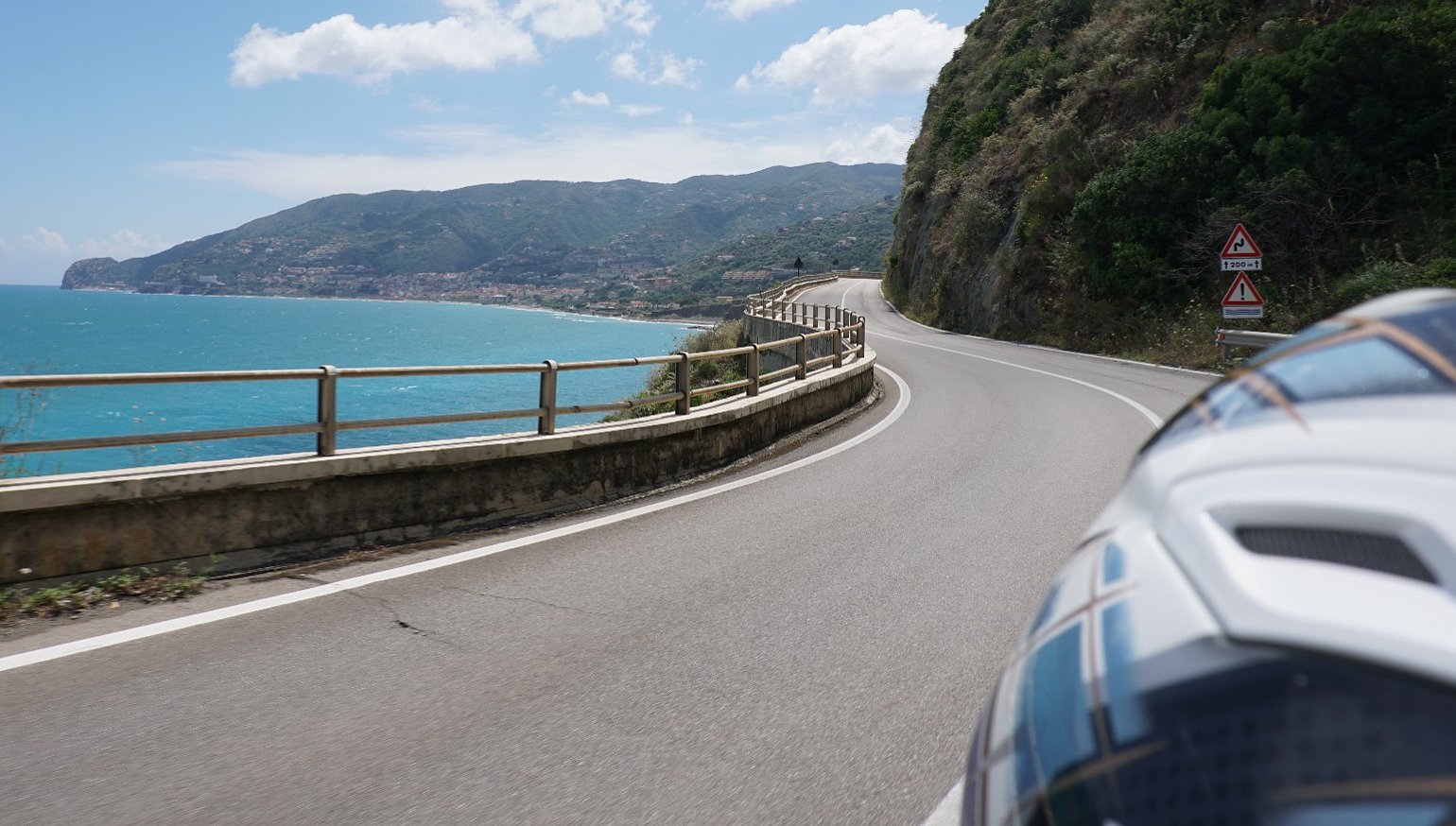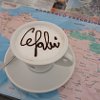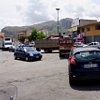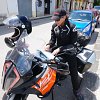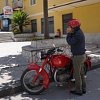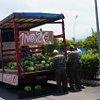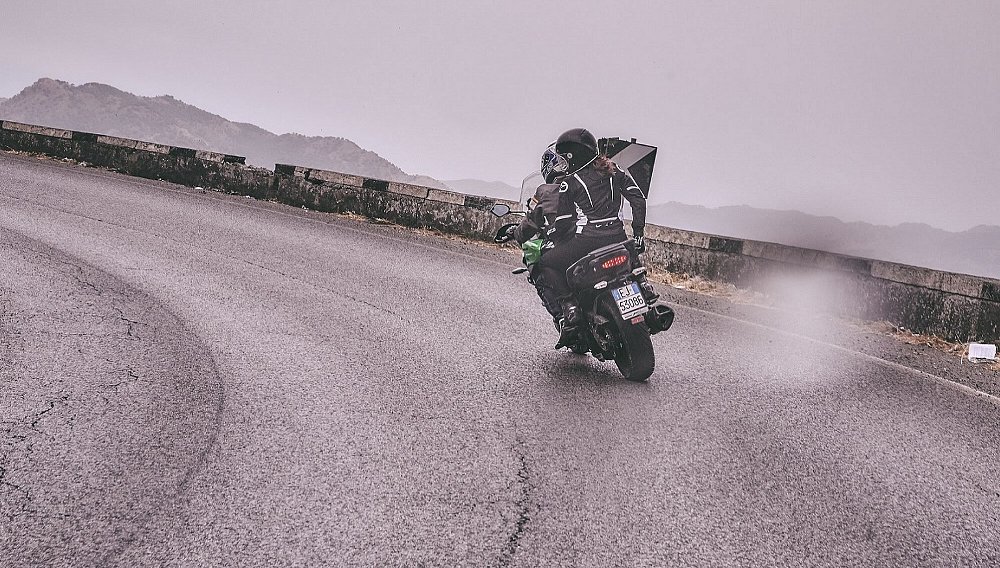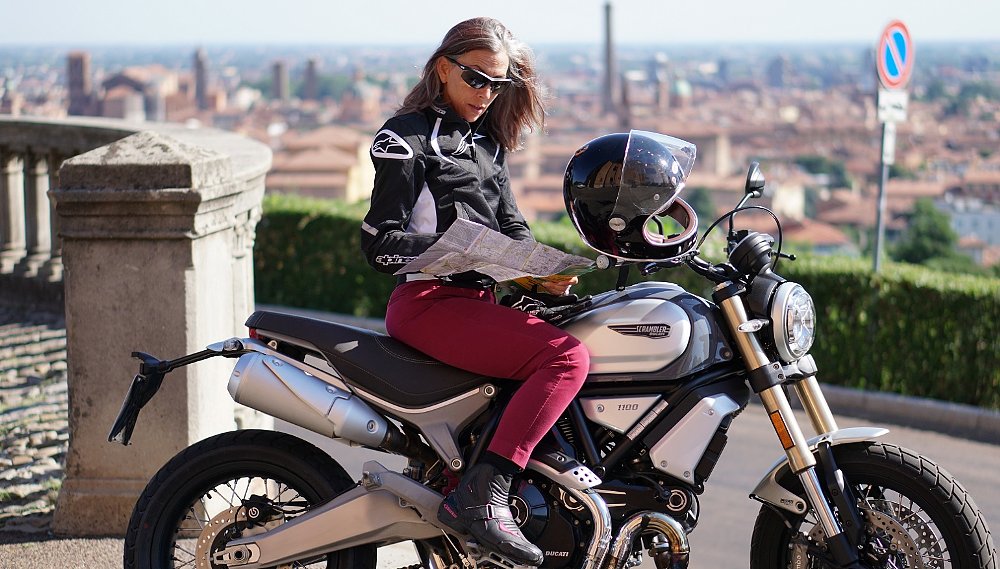I knew we had made a wrong turn leaving Mondello when we passed those prostitutes, standing by the side of the road in the forest.

Mary was riding behind me on a borrowed KTM 1290 Super Adventure S. She leaned forward and half-shouted into the wind, “Were those hookers?” I nodded. Either that or, in Sicily, the forest service hires buxom women to work as rangers, and sends them out in high heels and hot pants. Then, as I lapped a traffic circle for a second time, hoping to see a sign for Palermo, she asked, “Are we lost?”
She didn’t have to add the obvious adverb, "already?" After all, we were only 15 minutes into a planned multi-day ride. But first I should explain: Sicily.
When Pirelli invited me down to Sicily to see the "outdoor testing" operation based there, which went according to plan, and to lap the Targa Florio race course on the anniversary of a famous Metzeler tire victory there, which did not go to plan, Mary immediately invited herself along.

Filling in the Sicilian blank
She was curious about Sicily because her grandparents (on her dad’s side) had emigrated to the United States from the port of Messina in 1921. Mary’s grandfather died long before she came along; then her dad died when she was a child. She knew her grandmother, but the old woman almost never spoke of the old country.
So the whole Sicilian side of her family history was basically a big blank. She had a faded copy of her grandfather’s birth certificate, listing the place of birth as Monforte San Giorgio. Thanks to Google Maps, we knew it was a small town in hills. And she had a few family recipes that the Italian grandmother had taught to Mary’s mom, who was an Irish Catholic. (I know, right? I married a Sicilian-Irish woman. And you thought motorcycles were dangerous.)

Through Pirelli, we arranged to pick up a KTM 1290 Super Adventure S in Mondello. All I’d asked for was “something with luggage” and indeed it had hard bags big enough to take two people’s clothing and toiletries, with a few other essentials jammed in a helmet bag we repurposed as a tail pack. We had five days; ample time to cover a few hundred miles from Mondello to Monforte San Giorgio. Then, we’d drop the KTM off at Pirelli’s testing base in Giarre and cop a flight back to the mainland.
Beyond that, we had no itinerary, no reservations, and no idea what we’d find in the hill towns where Mary’s people were from. I suppose it was exactly the sort of adventure KTM had in mind when they spec’d a "road enduro." As soon as we were underway, I was, indeed, confident the beast could handle anything I’d consider a road. That said, with a wet weight pushing 600 pounds, a 34-inch seat height, and a high center of gravity — especially with full fuel, luggage, and a passenger — it literally kept me on my toes every time we had to come to a stop.

Pushing through Palermo, dodging a rain bomb
I was hoping to bypass Palermo, but after missing the highway on-ramp, we rode all the way through the city on surface streets. Scooterists buzzed past, giving a master class in rush-hour filtering. (I won’t call it "lane-splitting" because lane markings were few and far between!) Three-wheeled Vespa Ape cargo scooters jostled for position with everything from articulated trucks to horse carts.

If you’re curious, this is Palermo’s right-of-way rule: Any time you’re going in the same general direction as any other vehicle, and your front axle’s ahead of the other guy’s front axle, you’ve got the right of way, but only for half a second after making eye contact. After that you must yield. The same holds if you’re entering an intersection.
By the time I’d learned it, we were heading roughly east, the desired direction, on a road that was about three lanes each way. I say "about" because there were moments when there were three full-sized vehicles abreast, but it was more like five or six lanes each way when the vehicles were smaller.

Just at the point where I thought, "We’ve done it, we’ve crossed Palermo," we approached an intersection where two main roads crossed each other at an oblique angle. At any given moment, there could’ve been a dozen vehicles entering the intersection simultaneously, without any traffic control whatsoever. At one point, the KTM was aimed straight between the headlights of a huge cargo truck, and neither of us was in any way at fault. I caught the driver’s eye, looked emphatically in the direction I planned to go, then cackled maniacally as, clear of the chaos, I spotted a sign for SS 113 — the coast road to Messina.
Mary told me that the ride east on Strada Statale 113 — with the sea to our left and the arid, hilly landscape to our right — reminded her of the ride north on California’s State Route 1, beginning with the fast flowing sections around Morro Bay and getting more technical on the approach to Big Sur. Another similarity was that thanks to torrential rains the night before, we came across mud flows, standing water, and occasional lane closures where rocks and debris had tumbled onto the highway. The KTM and Pirelli Scorpion Trail II tires handled all that with aplomb, while functioning as a two-up sport-tourer on clean surfaces.

We stopped for a lunch break in Cefalù and, looking at a map, arbitrarily chose Capo d’Orlando as a place to stop for the night. But after saddling up and getting back on the coast road, the storms and lightning that we’d seen off in the distance all morning gradually closed in on us. Every little stream crossing became a raging torrent of water the color of a cappuccino, pushing branches and debris down out of the hills. When the lightning ahead of us reached a crescendo, I turned back to find a hotel. It was basically empty, waiting for August when all of Italy heads for the coast. The water heater in our room wasn’t even turned on. The proprietor, looking out at our shiny motorcycle, told me to park it out of sight around back, by the pool.
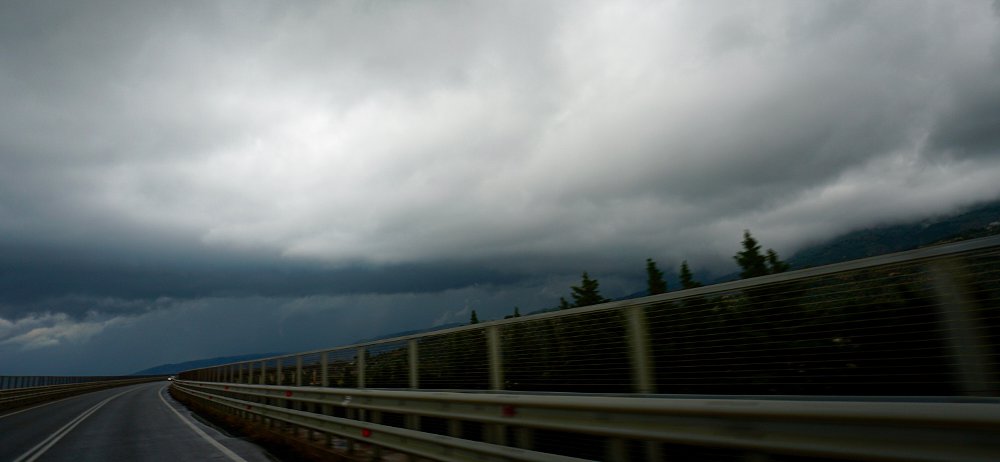
The next morning, while Mary went for a run on the beach, I walked up to a little café, and glanced at the local newspaper. The headline was from Capo d’Orlando — the place we’d planned to stop, before I turned back. It read “Bomba d’aqua!” — a "rain bomb" had fallen on the town, and photos showed streets that had become waist-deep rivers. I was glad we hadn’t pressed on to reach that destination, because I had a vision of calling KTM and trying to explain that their bike had been washed out into the Mediterranean, and that would’a been awkward.
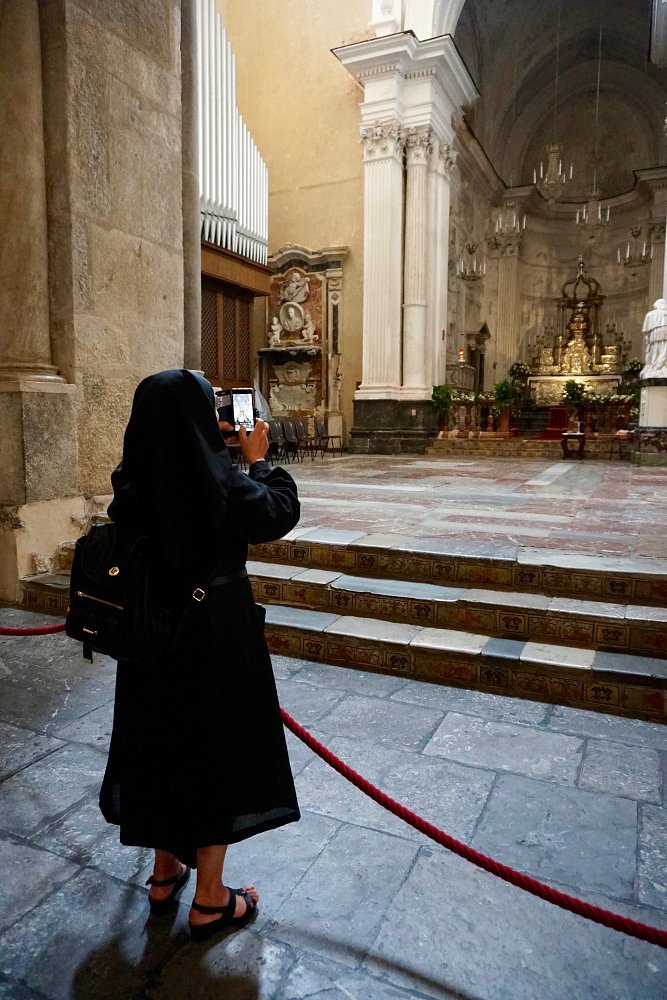
Definitely two.
Pursuing Pinizzottos
Mary’s on a Facebook group, “We are Pinizzotto,” for people with her surname. People on that group told her to also visit Roccavaldena, another hill town where that name is common. We spent one more short day tooling east along the shore, stopping frequently, until we came to a hotel that made a good base for trips into those hill towns.


The highest point in the town was occupied by an ancient church, and we parked there as a Sunday mass was getting out. I made a mental note of the road the priest left on, in his tiny Fiat, because it had to be better than the one we’d ridden in on. The caretaker, seeing strangers, waved us in and showed us into the sacristy, which housed an incredible polychrome carving of Saint Nicola of Bari.

Monforte San Giorgio was pretty much on the next hill over, but getting there involved quite a descent, and another climb ending in another slow, steep, urban trials stage. It would have been unfriendly territory for approaching pirates, too. We parked in another church square and ordered espressos in a small café decorated with murals of Marilyn Monroe and Elvis Presley.
A group of people carrying bows and arrows, dressed as if they were about to defend the town, walked across the square as if that was a completely natural thing to be doing, and disappeared down a narrow side street so steep that it turned into a staircase from time to time.
“Let’s follow them,” Mary said. And we did, though I got real cautious when I heard the unmistakable twang-thwack of an arrow being released and a moment later, hitting a target.

As it turned out, we’d arrived on a day when hundreds of archers, many using replicas of medieval bows and arrows, shot at stages laid out right in the town. There were a bunch of different targets, ranging from a stuffed rabbit sitting on a haybale to a dangling rope with a bell on the end, where a hit was scored by making the bell ring. The group we followed seemed happy to have a couple of spectators, even if they had to take extra care to ensure we didn’t accidentally stray into the path of a flying arrow.
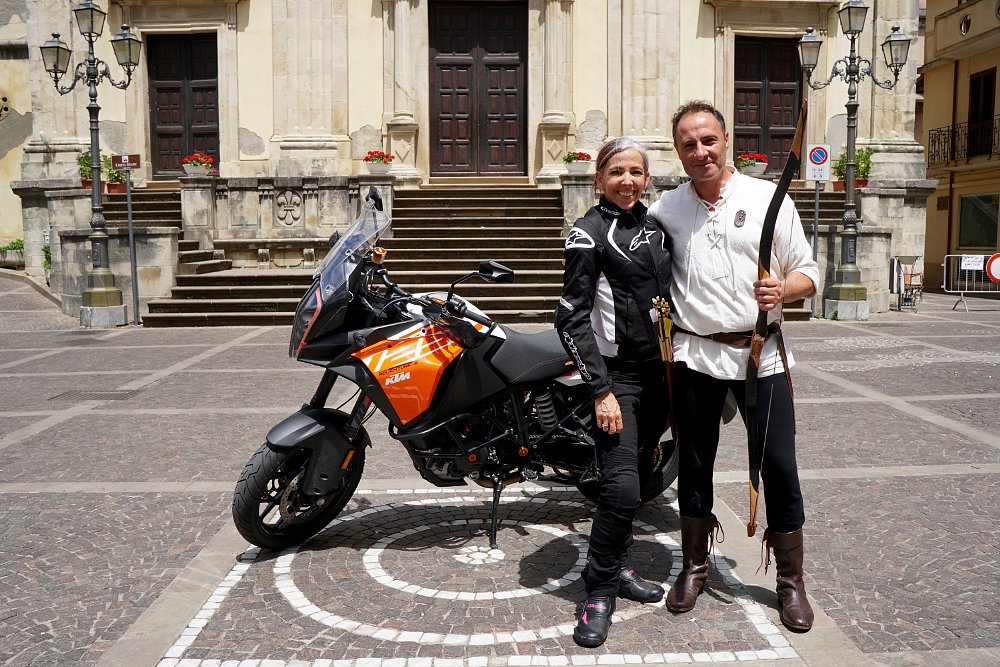
By the time we got back to the bike, the archery competition seemed to be over. I wanted to grab a photo of Mary in the town square — a place her grandparents would have been many times as children — but when I set up the shot, several of the archers insisted on being photographed with the bike, too.
That evening, back down in the safety of the hotel, we watched big storms rage nearby again, complete with waterspouts out in the Mediterranean.
The one thing we’d missed in Monforte San Giorgio was the cemetery. In a lot of old European villages, it would’ve been right by the church, but in a fortified town, land’s too precious to waste on the dead. So that evening I got online, found it using Google Maps, and tried to memorize a route to it.
We were determined to visit the cemetery before we headed to Giarre to return the KTM. I thought there were two other roads, roughly parallel to the main road into town, that converged on the cemetery. The first route was completely blocked by a fresh landslide; the second seemed promising, but when the rough gravel road turned into two-track I developed misgivings. It wasn’t too much for the bike at all, or even for me, but it was a bit much for me on that bike with my wife on the back.

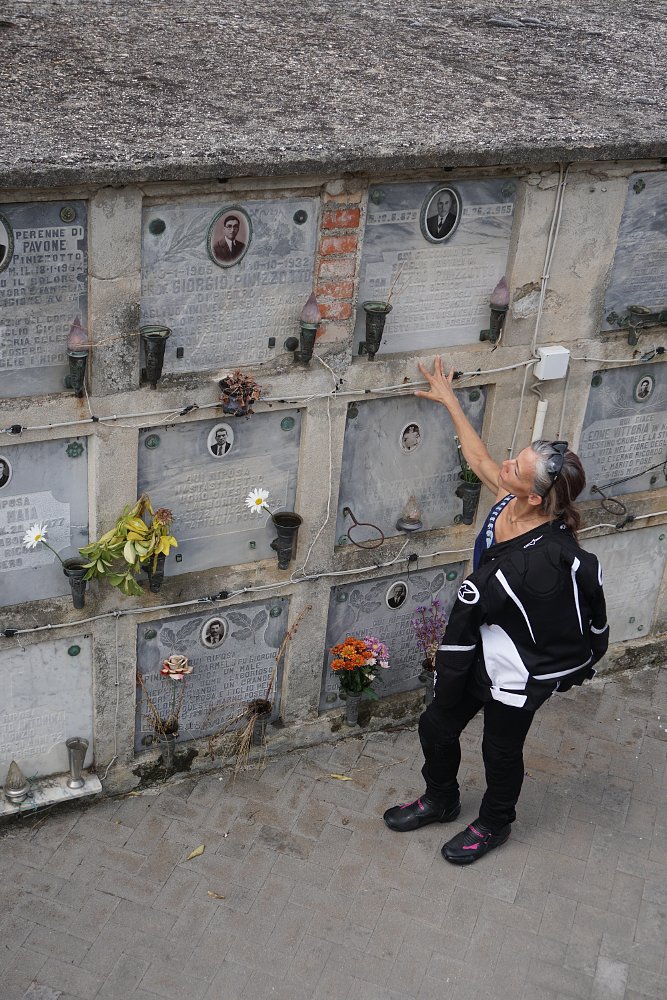
It was full of Pinizzotto graves, and Giorgianni ones; that was her grandmother’s maiden name. The graves went back hundreds of years. There were crypts so old and decrepit that we could look right in and see bones. But the most common year was 1908, when a huge earthquake killed half the people in the province of Messina. Mary didn’t know how those people were related to her, but they obviously were, somehow.
Seeing all the buried Pinizzottos and Giorgiannis sort of freed us to stop exploring. We got on the highway to Giarre, in a hurry to get to our last AirBnB on the island, because it had something anyone who’s ever spent a week or more traveling by motorcycle really covets: laundry facilities.
Pinizzottos that might have been; and garlic

There was one final reminder of what was and might have been. All her life, Mary’s mom had made "spaghetti and oil" the way her mother-in-law had taught her: by almost burning garlic and red pepper flakes in olive oil. That’s the way Mary makes it and if I make it for her she always reminds me to "burn the garlic" (which is heresy for me, since I learned to cook in the French style).
Anyway, on that last night in Sicily, Mary ordered spaghetti in oil, and when it came out the plate was redolent of deeply caramelized garlic.
Exactly the way she likes it.

 Membership
Membership

